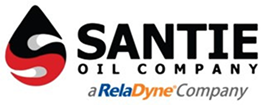Cooling, chip removal, corrosion control, and general lubrication are the four main functions of metalworking fluids. In this blog, we'll be looking at general lubrication and how using the right industrial lubricants can save you both time and money.
A lubricant's main purpose is to reduce wear and heat between solid materials by reducing the friction between them. Lubricants vary in thickness and resistance to flow. Thinner lubricants tend to move and disappear quicker than thicker and more viscous lubricants. When considering which industrial lubricants to use for a specific job or project so you can save time and money, it's important to take your materials into account.
Metal-on-Metal
Oil-based lubricants are generally the best option for metal-on-metal projects. Oil flows very freely, which allows for uniform lubrication of parts. Use a multipurpose oil for good all-around lubrication that doesn't break down easily. For parts that aren't moving but should be, a penetrant -- a thin, oil-based material that seeps into small spaces -- can be used to loosen them up.
For heavy-duty applications and protection from rusting, grease can be used. A spray-on product like white lithium grease provides a layer of even protection that dries solid and won't run off, freeze, melt, or wash off. Products like these are best used on pulleys, auto hinges, and sprockets that are exposed to the elements.
Metal-on-Plastic
Lubricants with either PTFE (polytetrafluoroethylene) or silicone are best for plastic surfaces. PTFE is hydrophobic, making it ideal for damp conditions. Silicone lubricants also repel water and are safe for use on metal, plastic, rubber, and wood. While some industrial lubricants can be used around painting operations, silicone-based lubricants should not, so always be sure to check the labeling.
Plastic-on-Plastic
PTFE and silicone lubricants with work for plastic-on-plastic applications. Silicone will result in a thicker, wetter layer that may collect dirt and dust, while PTFE will result in a thinner, grime-resistant layer.
Metal-on-Rubber
PTFE products are the best choice for rubber lubrication because they result in a thin but hard layer that does not absorb dust, dirt, and grime.
Industrial lubricants can be used for various applications, so it's always important to read the labeling carefully to ensure that you're using the correct lubricant for a job or project. This way, you'll save time and money. To learn more, contact Santie Midwest today.

